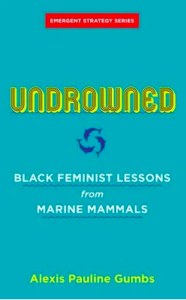In some ways, it’s easy to call the ocean queer—in the most expansive definition of the term. Non-human animals have a much more diverse and expansive understanding of sex than we do. Seabirds like albatrosses and penguins forge homosexual bonds as strong as heterosexual ones. Many fish are hermaphroditic or capable of changing their sex to fill a needed role in their community. Male seahorses give birth and puny male anglerfish attach themselves to their larger female mates like a man in a Namio Harukawa illustration.
These parallels are certainly fun. But as I was writing my essay collection, How Far the Light Reaches, which is not inaccurately described as a gay book about sea creatures, I avoided writing too much into these more literal connections. I am wary of reading too much into direct parallels between human and animal biology—I am still haunted by the dozens of headlines of the “transgender fish” depicted in Blue Planet II—but also it felt much more generative to look for queerness in the ocean through more slanted, metaphorical ways.
The more I read about different sea creatures, the more I recognized glimmers of queerness in the ways they eked out a living undersea, from the hairy-chested yeti crabs that rave atop each other by hydrothermal vents or the shimmering coil of a gelatinous salp, which is both an individual and a colony. I learned about worms living on the scraps of sun-touched society and jellyfish that can have second adolescents, like many of us queers. The ocean brims with metaphor, and it doesn’t hurt that so many things living here are the color of a rainbow.
As I wrote, I took comfort in reading the work of other writers who write to excavate or imagine queerness in the ocean, drawing lessons from marine mammals or the people who hoped to chronicle the eels, rays, and lumpfish lurking in its depths. In this research process, I was reminded by how the ocean is a space of radical possibility.
When I asked my partner, T, for their thoughts on one of my essays, they shared a passage from the queer theorist Jose Estebon Muñoz’s Cruising Utopia. In the passage, Muñoz describes queerness as a horizon; not yet here but warmly illuminated with potentiality. And what is the ocean but an endless horizon?
*
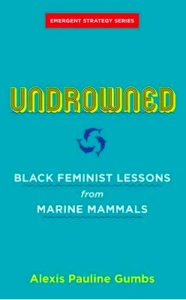
Alexis Pauline Gumbs, Undrowned: Black Feminist Lessons from Marine Mammals
In this miracle of a book, Alexis Pauline Gumbs turns to our closest cousins in the sea in search of the wisdom they can offer in our human fights for justice, inspired by Gumbs’ ancestors’ own relationships with the sea and marine mammals. Undrowned is a practical handbook with concrete lessons: listen, breathe, go deep, be fierce, be vulnerable. But it is also a book about freedom and pushing toward what we think of as the impossible, just as early ancestors of whales stepped into the water that would eventually become their home. Gumbs reads marine mammals as queer, protective, and united against the extractive and militarized forces of capitalism. This book is a radical act of love, and one I simply cannot recommend enough.
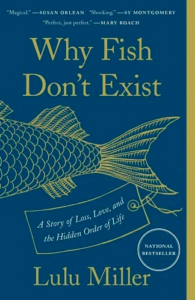
Lulu Miller, Why Fish Don’t Exist
Lulu Miller’s book opens as a portrait of an obsessive man, the taxonomist David Starr Jordan, desperate to save his preciously labeled species of fish from an earthquake. But the narrative soon unspools into an interrogation of the dangers of sorting the chaos of the natural world into artificial boxes, as Miller explains Starr Jordan’s related belief in eugenics. The book teems with historical anecdotes and revelations about taxonomy, but I found myself most drawn to the scenes where Miller herself tries to understand her own place in the natural world, leaving a straight marriage and falling in love with a woman, swimming naked among sea creatures in the Caribbean and reveling in the chaos of it all.
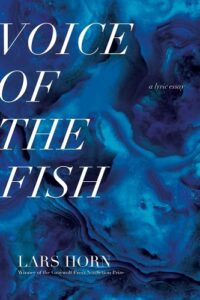
Lars Horn, Voice of the Fish
Reading this book felt like a mystical experience—walking through one of those aquarium tunnels that also transports you into antiquity, or perhaps gazing at a fish tank with walls of stained glass. The Voice of the Fish is a memoir infused with myth, literature, history, and science, lenses that help reflect and refract Horn’s relationship with their body through transition and injury. There are scenes of horror, fear, dissociation, and melancholy. Yet the narrative is buoyed by Horn’s faith in and tenderness toward their body, in all its changing forms. I read Voice of the Fish slowly, carefully, and with great envy.
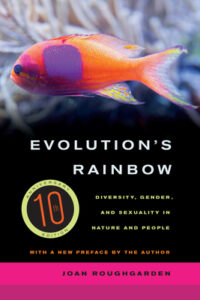
Joan Roughgarden, Evolution’s Rainbow
Evolutionary biologist and ecologist Joan Roughgarden takes the reader through a wild romp of the diversity of sexuality in the animal kingdom and a condemnation of academic fields that suppress such diversity in humans. It’s a wonderful index of the many ways animals are queer, in the ocean, on land, in caves, in the sky, in the desert, etc. Evolution’s Rainbow was published in 2013, so some of the science has progressed in the years since, but it remains a really eye-opening and enjoyable read.
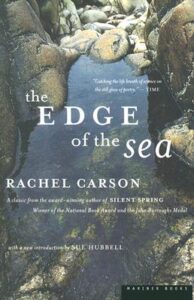
Rachel Carson, The Edge of the Sea
Rachel Carson wrote The Edge of the Sea in 1955, two years after meeting Dorothy Freeman of Southport Island, Maine. Carson and Freeman would exchange passionate love letters that they destroyed soon after reading (as Freeman wrote to Carson, “My love is boundless as the Sea.”) Freeman and Carson would spend their days exploring tide pools together, and after Carson died of cancer, Freeman would be the one to pour Carson’s ashes into the sea. So, no, The Edge of the Book is not a queer book, but it is a luminous guide to the same Atlantic seashore Carson and Freeman stared into together, searching for what life managed to survive between these worlds, the land and the sea.

Julia Armfield, Our Wives Under the Sea
When I first learned about this book, I gawked at the description: a lesbian romance slash deep-sea mystery? I ordered it immediately and raced through the book. I was entranced by the ghost of the love story between Leah and Miri before Leah vanishes on a deep-sea mission gone awry. I was transfixed by Miri’s tenderness and fear of her gradually morphing, water-bound wife, and Armfield is a master of suspense as she drops clues of what went wrong on the mission. And I have to say it was refreshing to read a queer love story where the monster is not bigots, but a truly otherworldly force blessedly unaware of the heteropatriarchy.
________________________________
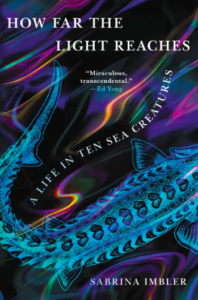
How Far the Light Reaches by Sabrina Imbler is available now via Little, Brown.

